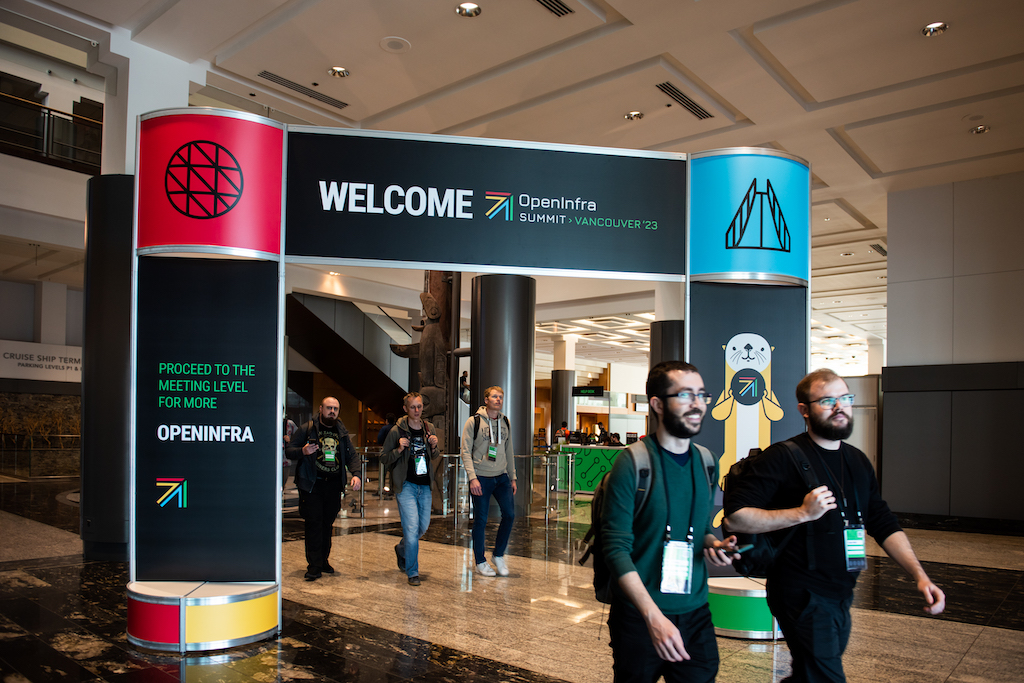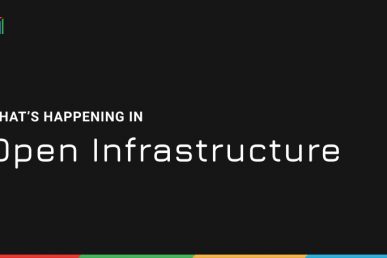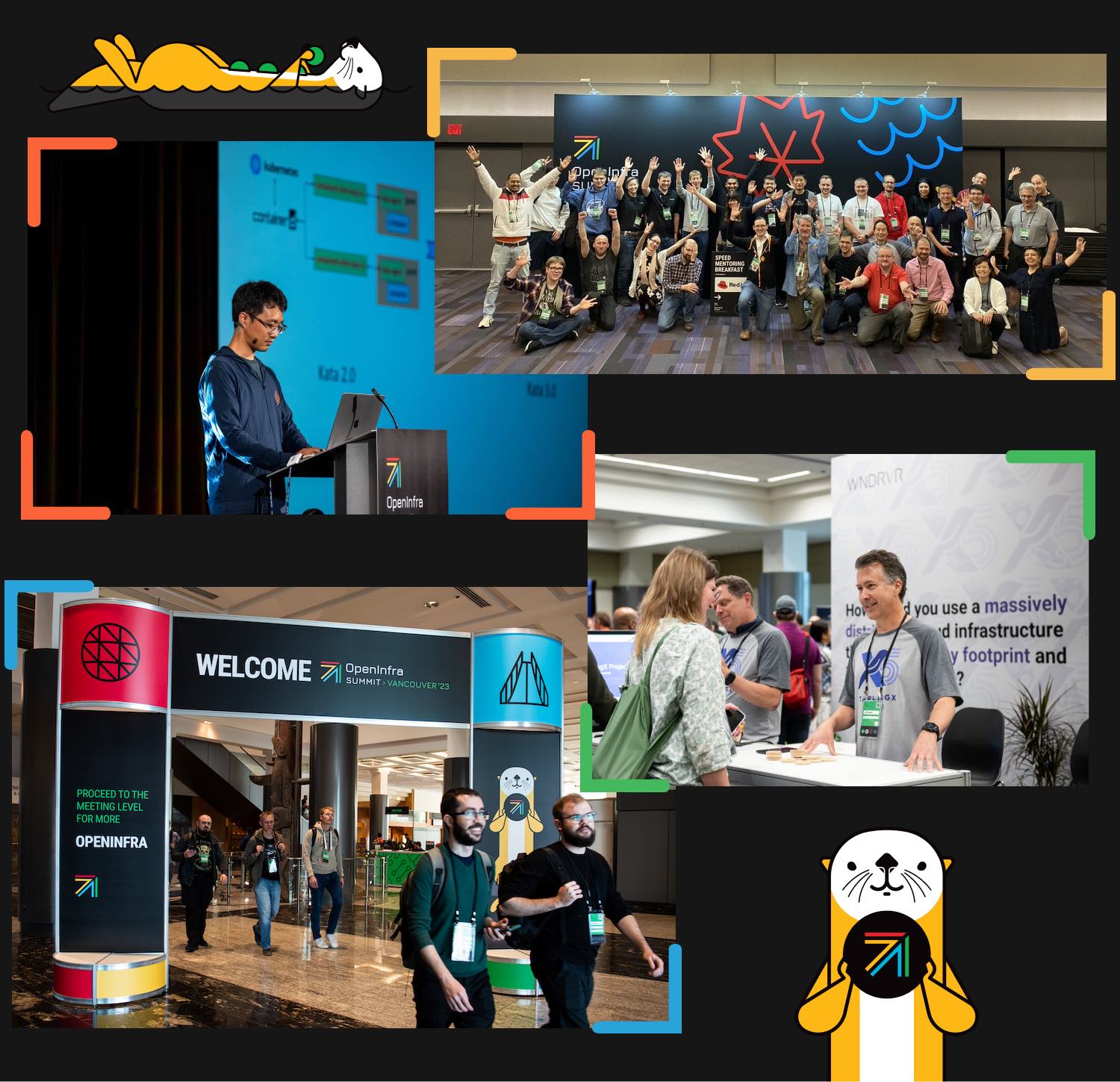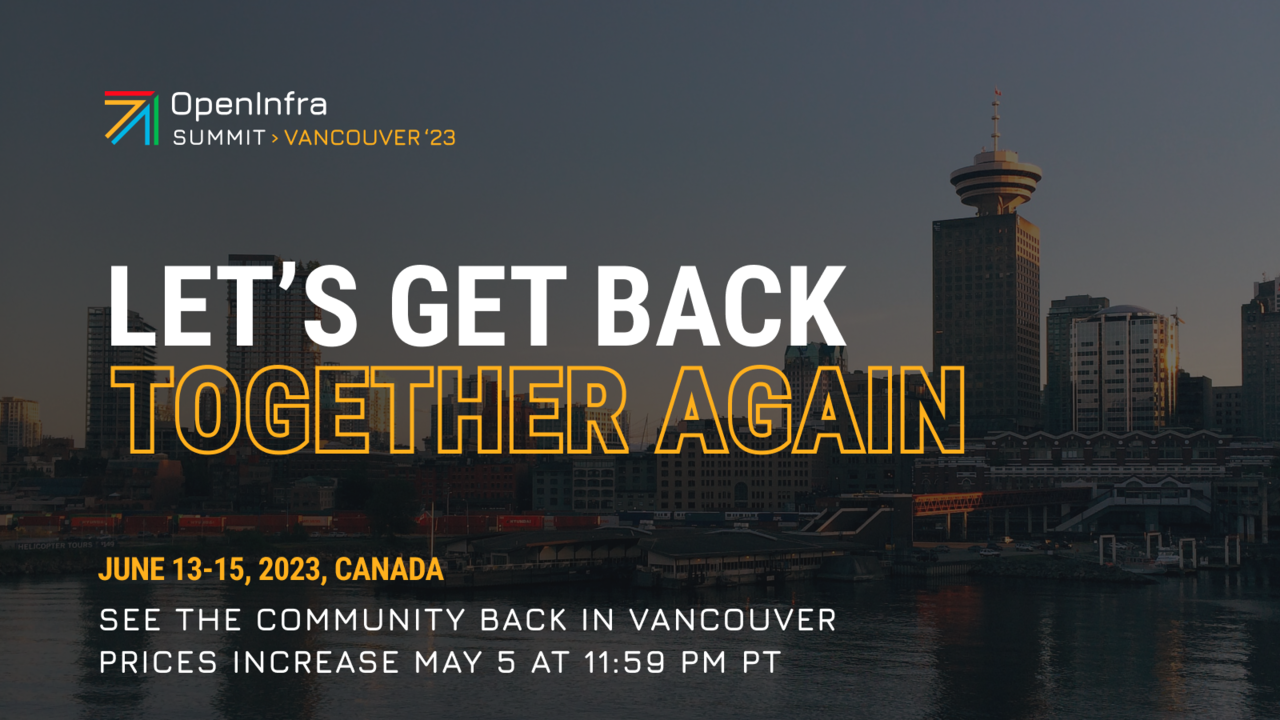If you didn’t attend—or if you did and want a replay—Superuser collected the announcements, user stories and Forum discussions you may have missed. You can also catch videos for the Summit sessions on the OpenInfra Youtube page.
Let’s start with the OpenInfra Foundation announcements:
- The OpenInfra Foundation has launched OpenInfra Europe, a regional hub based in Belgium, to give the foundation a better mechanism to support its European membership organizations and their needs. Thierry Carrez, OpenInfra Foundation general manager, explained, “Key regional issues have emerged, like digital sovereignty in the EU, that have created an opportunity for OpenInfra regional hubs to facilitate collaboration and discussion, coordinate responses, and give a voice to the concerns of the OpenInfra ecosystem.” Visit Openinfraeurope.org to learn more.
- Another OpenInfra Foundation hub, OpenInfra Asia, is now based in Singapore. The Asia region of the OpenInfra community has experienced rapid growth in recent years and currently represents 32.5% of OpenInfra Foundation member organizations. “The establishment of OIF Asia will accelerate the development of virtualization and container technologies, promote deep collaboration and cooperation among Asian members, and inject new strength and vitality into the development of open source in Asia,” said Zhou Junyi, general manager of cloud network and open source, Huawei. Visit Openinfraasia.org to learn more.
- Congrats to Bloomberg, winner of the 2023 Superuser Award! Bloomberg, a global finance, media and technology company, has been an active contributor to and user of OpenStack since 2013. Bloomberg’s global compute and storage investment consists of over 400,000 OpenStack cores, several petabytes of RAM and hundreds of petabytes of replicated Ceph block and object storage. Bloomberg also runs hundreds of bare-metal and virtual Kubernetes clusters. Read more about Bloomberg’s use of OpenStack in their Superuser nomination.
- Okestro has elevated its commitment to the global community by becoming a Gold Member after joining a year ago as a Silver Member. Okestro is also Premier Sponsor of the OpenInfra Summit. As a leading cloud software company in South Korea, Okestro pledges to encourage adoption of OpenInfra technology, elevating South Korea as a leader in the global cloud ecosystem. Read more about Okestro’s work in South Korea.
And here are other keynote highlights:
- The OpenInfra community is now truly global, with 110,000 community members from 182 countries. This reach would not be possible without the passion and coordination from individuals who rally their local communities together. During the keynotes, Helena Spease, Marketing and Community Coordinator for the OpenInfra Foundation, was joined onstage by 19 OpenInfra Days coordinators who were applauded for their contributions.
- Ildiko Vancsa, Director of Community for the OpenInfra Foundation, gave a short history lesson on how LOKI (Linux, OpenStack, Kubernetes Infrastructure) has become the open infrastructure standard, supporting critical research, connectivity, and access to information. She cited numerous examples, including CERN, China Telecom, and Bloomberg.
- StarlingX is celebrating its 5th anniversary! In fact, the project — the open source distributed cloud platform optimized for low-latency and high-performance applications — was announced on the keynote stage in Vancouver, BC, Canada, five years ago. The community celebrated with an ice cream social and lots of sessions.
- Jeff Gowan from Wind River shared during his keynote that StarlingX is the next-generation infrastructure for next generation use cases. If you aren’t doing it already, you will eventually be expected to deploy new applications for new use cases in a distributed cloud environment. Fortunately, you don’t have to figure out distributed cloud by yourself. StarlingX has already solved many of the challenges of distributed cloud and continues to evolve with emerging requirements.
- The keynote audience was treated to a live demonstration of running Kubernetes on OpenStack with Magnum and Cluster API (CAPI). Running Kubernetes on OpenStack is an easy and safe choice — you can upgrade a cluster with only two clicks and, by customizing only a few parameters, you can stamp out as many new clusters as you want.
- Bitergia dashboard is now available. OpenStack contributor metrics are now available in Bitergia Dashboard. You can find out more information here.
- Mark Collier, OpenInfra Foundation COO, shared in his keynote address how open source is building the future of AI. According to Collier, AI has already been disrupted by open source. “Even three months ago we thought only companies with billions of dollars could produce these AI models, and now open source is reducing that to laptops with a GPU.” Conversely, AI is disrupting open source as well. One of the most immediate impacts AI is having is on how code is produced. Check out Mark’s keynote for more.
- During his keynote address, John Dickinson of NVIDIA shared that AI and ML are taking off like a rocket, and the fuel powering that rocket engine is data. The job of storage providers is to put as much data into the engine as quickly as possible. NVIDIA shared how it is using OpenStack Swift to give users a way to explore massive AI and ML datasets without needing to worry about the underlying storage.
- Graphcore provides AI solutions using their own IPU (Intelligence Processing Unit) chips, and the fastest networking interfaces and devices available. During the keynotes, Graphcore explained how OpenStack provides innovative and optimized infrastructure for these IPUs to allow for automation and efficient utilization.
- Enhancing security for sensitive data and secrets is a top priority for organizations worldwide. Jonathan Bryce addressed from the keynote stage how the OpenInfra community is advancing security, which is a complex challenge with no single answer. He says it’s about layering different tools and techniques that are always evolving to adapt to a dynamic threat landscape. The OpenInfra project Kata Containers is paving the way for confidential computing.
- Microsoft shared how it’s using Kata Containers and Kata Confidential Containers in Azure Kubernetes Service to achieve zero trust operator deployments.
- Ant Group, one of the founders of the Kata Containers project, gave a live demonstration, demystifying confidential computing by showing how a large-language model application such as LLaMA can be run in confidential containers.
- Aeva Black, member of the Board of Directors of the Open Source Initiative, concluded the keynotes with a challenge to the global open source community to rise to the supply chain security challenge. Governments are heavily involved in mandating regulations, and open source needs to take a proactive role in shaping those discussions. They encouraged community members to get actively involved and to raise the bar for projects by building security into the SDLC.
Here are some of the key community activities, technical decisions and roadmap discussions:
- Canonical (the company behind the Ubuntu Linux distribution) announced the extension of its commercial OpenStack offering to small-scale cloud environments with a new project, Sunbeam. Sunbeam offers developers and IT teams without OpenStack experience the ability to set up an OpenStack deployment within minutes.
- Encora shared how stx-openstack, a flexible and scalable cloud platform, can enable organizations to support both traditional VM-based and containerized workloads, improving efficiency, agility, and cost-effectiveness in application development and deployment.
- In the Forum, “Collaborating Without Boundaries,” Helena Spease and Jimmy McArthur talked about establishing an opportunity to level the playing field through open collaboration, creating a unified place to help these groups work together and share knowledge around solving these problems through open infrastructure, open connectivity, micro transactions, and technology training programs.
- In Germany, companies and universities have been able to operate their own private mobile networks since the release of 5G frequencies. At Osnabrück University of Applied Sciences, a private 5G campus network enabled and powered by OpenStack and StarlingX.
- The learning platform Open edX originally deployed to cloud server instances with Ansible using OpenStack Heat and GitLab CI. The community then pivoted to containerized deployment, switching to Kubernetes on OpenStack Magnum with a CI pipeline managed by Zuul. This presentation compared the technical architecture before and after, with lessons learned in the transition.
- Whereas Kata Containers provide the baseline isolation and sandboxing for containers, confidential containers bring a new set of security capabilities to achieve your stringent zero trust goals. This Microsoft presentation explores how sensitive data workloads can be isolated from the infrastructure host and Kubernetes control plane to achieve remotely attestable and integrity protected pods through Azure confidential computing (ACC).
- StackHPC and VEXXHOST presented a new Magnum Kubernetes driver, based on the ClusterAPI provisioning engine. The driver harnesses upstream functionality to dramatically simplify the code base and maintenance for Magnum. It also provides a fast path to new capabilities, and leverages code widely tested across many infrastructures. At the same time the Magnum API, CLI and Horizon interface provide continuity for users.
- Ant Group and Mirantis teamed to share how Kata Containers and Moby can once again work together. Their presentation looked back on the history, explained what happened in this area, why things went south in the middle, and how it was fixed in the end. The session included a demo to show how to run Kata Containers with Moby, easily and smoothly.
- Extended Maintenance SIG chair Tony Breeds and Jeremy Stanely, Senior Principal Engineer with the OpenInfra Foundation, opened the floor for input on how to end the extended maintenance “experiment” in OpenStack. They discussed what the community wants with respect to stable branches, vendor collaboration and a new branch/CI policy that doesn’t overtax the community.
- Bernd Erk, CEO of Netways, discussed how convenience is killing open standards. He warned that all major cloud providers have been pushing their serverless solutions in order to lure customers into a new form of vendor lock-in. He says the number of serverless deployments has already surpassed those of container based ones. He challenged, “There is no time to waste, to remind ourselves about Open Standards, their value to our industry, and why it is worth fighting for them.”
- OpenInfra and Bitergia celebrated a successful year-long partnership and noteworthy contributions to the open infrastructure community. Georg Link of Bitergia also outlined the roadmap for future endeavors, aiming to further drive advancements and foster growth within the open-source ecosystem.
- The CHAOSS (Community Health Analytics for Open Source Software) community defines metrics and builds software for understanding open source projects. They believe we need a new way to look at OSS project metrics, because each open source project is different, and everyone is interested in different aspects of project health. This session showcased the work of the CHAOSS community on building metrics models as collections of metrics for specific use cases.
- Bitergia offered a deep dive into the dashboards of the Kata Containers project. This presentation explored the features and functionalities of the dashboard, providing valuable insights into the dynamic Kata Containers community, including the project’s organizational diversity.
- Efficient power consumption is crucial for vRAN and Open RAN deployments worldwide due to the ever-growing data demand. In a recent GSMA Intelligence survey, 86% of operators emphasized the significance of energy efficiency. Arm and StarlingX have developed tailored solutions to address this challenge. This session provided an overview of Arm’s power-saving capabilities and discussed the current status of the StarlingX port and upstreaming efforts on Arm.
- LINE is an instant messaging service based in Japan with 176 million active monthly users in the four major markets. Line increased its Verda OpenStack-powered cloud footprint to 4 million cores. This presentation addressed challenges and lessons learned in each phase of Line’s six-year journey with OpenStack.
- VEXXHOST shared how it pioneers flexible, scalable, and interoperable solutions using technologies like OpenStack and Kubernetes. A particularly highlight was how organizations have scaled and innovated with VEXXHOST’s expertise.
34. China Telecom shared best practices of large scale, multi-architecture OpenInfra deployment, specifically referencing ChinaTelecom Cloud which leverages OpenStack, cloud native and openEuler. The session also addressed unified management of heterogeneous computing resources and innovative practices for security and migration.
- Bloomberg shared its version of “the tortoise beats the hare” story, sharing how it upgraded the operating system of its private cloud, which is made of thousands of physical machines, has become the home of tens of thousands of VMs and the foundation for its core applications. In comparing Ubuntu update-manager (the hare) to fully rebuilding the entire fleet to a newer version of Ubuntu (the tortoise), Bloomberg realized the slower method had greater benefits. They shared how they made their decision and the lessons learned along the way.
- Developers from openEuler OS community and OpenInfra CFN Working group present an easier way to bring DPU acceleration to OpenStack to support high-performance computing and artificial intelligence workloads.
- Red Hat provided an architecture tour of Ironic bare metal deployments. It discussed Ironic deployment tools, described the architectures they enable, and explored the use cases which led to those architectures. Presenters also described the architecture of very large bespoke deployments such as at CERN, which help reveal scalability considerations.
- At the Berlin OpenInfra Summit, there was a keynote explaining how to get power metrics from compute hosts and instances using the Scaphandre project. This was the inception of the sustainability initiative in Nova and led to the implementation of features that allow operators to tweak the performance and power usage of their clouds. As a result, Nova now comes with power management support. Red Hat shared what they’ve worked on for the last few cycles and explored how operators can leverage this work to improve their cloud’s sustainability.
- Dell Technologies shared its approach to catching consistent Redfish in the Deep Blue Data Center.
- G-Research shared how open source Armada enables researchers to build a research platform on top of Openstack and Kubernetes to better enable quantitative researchers to run their workflows.
- Dr. Armstrong Foundjem is a researcher with the DEEL project at Polytechnique Montreal. He stressed that it’s of utmost importance to have fairer interpretable AI models to make decisions in healthcare, finances, the justice system, etc. His presentation introduced a strategy for predicting biases earlier enough in a multi-class and multi-label problem to prevent harm.
- Lablup introduced Sokovan a container orchestrator for accelerated AI/ML workloads and massive-scale GPU computing.
- KPMG Ignition Tokyo and LINE teamed up to share a beginner’s journey of operating a production-level private cloud using OpenStack and managed Kubernetes.
- To improve the security of OpenStack deployments, all traffic, both internal and external should be encrypted. Cleura shared how to encrypt internal traffic with Openstack-Ansible.
- Josephine Seifert is a team member of SecuStack, a security enhancement project for OpenStack. Her presentation addressed how to configure Multi-Factor Authentication (MFA) with Keystone.
- Red Hat described the benefits of Secure Boot, even for virtual workloads, and described the options for enabling Secure Boot in OpenStack workloads today.
- OpenID Connect (OIDC) is an open standard for authentication, which allows users to seamlessly reuse their identities across various web services or organizations to make use of their existing identity systems. This presentation explored how to integrate OIDC with Keystone and Horizon and explored the current proposals and initiatives within Keystone to make OpenStack more interoperable with this open standard.
- Nipa Cloud has discovered that using OpenStack Ocata for its NIPA public cloud produces a higher ROI for their company than other cloud options. In this session, they shared the reasons behind this conclusion.
- VEXXHOST uses Atmosphere, an open source solution, to deploy all of its production public clouds and most of its private clouds. In this session, VEXXHOST shared the ins and outs of Atmosphere and how to run it yourself.
- The OpenStack Large Scale SIG hosted an open discussion between operators of OpenStack large deployments to discuss challenges, pain points, technical choices, and success stories encountered during scaling.
What’s next
That’s a strong finish for the Vancouver Summit, but we’re already thinking about our next run… where should that be?
- Exploring the Open Infrastructure Blueprint: Huawei Dual Engine - September 25, 2024
- Open Infrastructure Blueprint: Atmosphere Deep Dive - September 18, 2024
- Datacomm’s Success Story: Launching A New Data Center Seamlessly With FishOS - September 12, 2024

)










